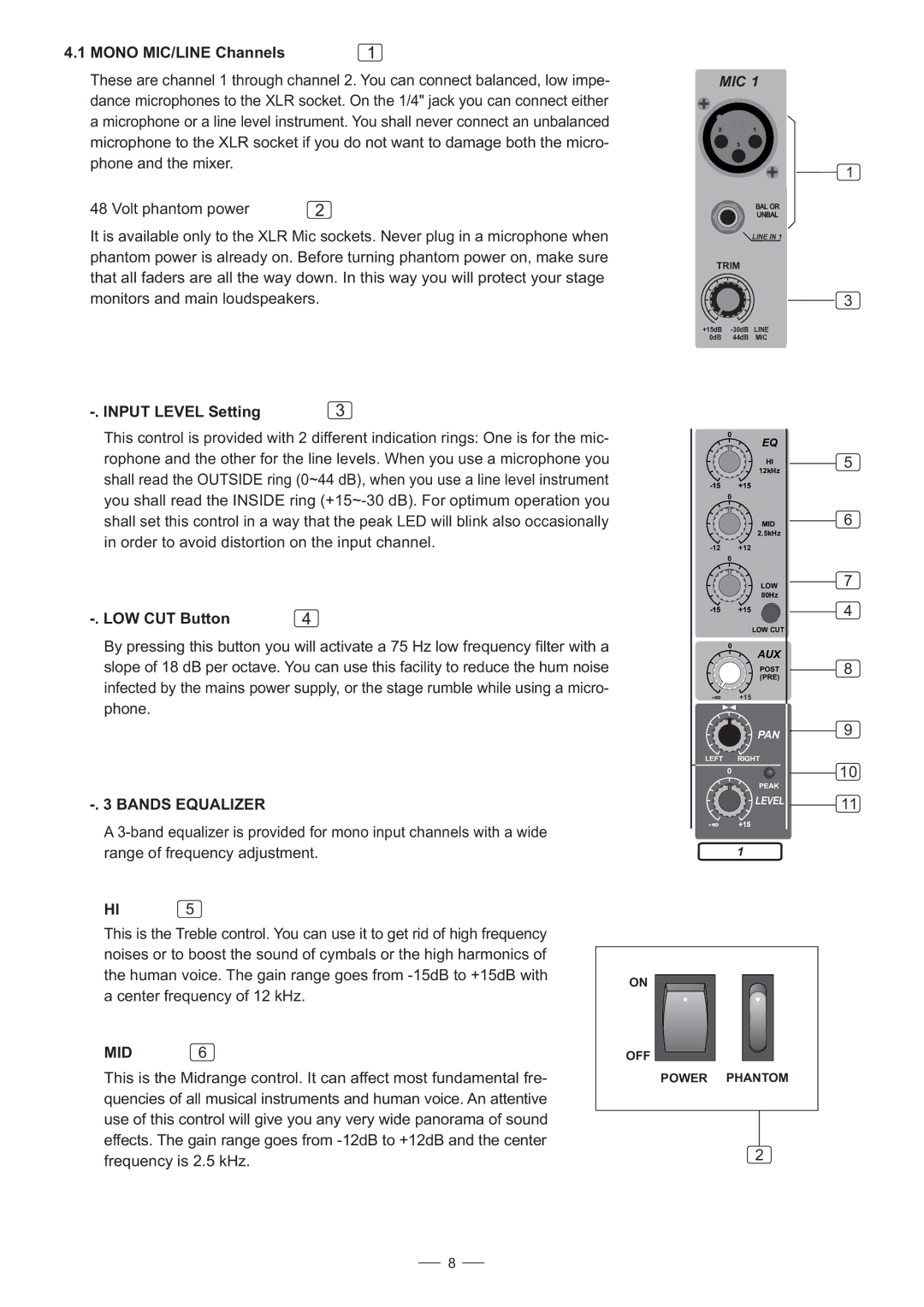
4.1 MONO MIC/LINE Channels | 1 |
These are channel 1 through channel 2. You can connect balanced, low impe- dance microphones to the XLR socket. On the 1/4" jack you can connect either a microphone or a line level instrument. You shall never connect an unbalanced microphone to the XLR socket if you do not want to damage both the micro- phone and the mixer.
48 Volt phantom power | 2 |
It is available only to the XLR Mic sockets. Never plug in a microphone when phantom power is already on. Before turning phantom power on, make sure that all faders are all the way down. In this way you will protect your stage monitors and main loudspeakers.
| 3 |
This control is provided with 2 different indication rings: One is for the mic- rophone and the other for the line levels. When you use a microphone you shall read the OUTSIDE ring (0~44 dB), when you use a line level instrument you shall read the INSIDE ring
| 4 |
By pressing this button you will activate a 75 Hz low frequency filter with a slope of 18 dB per octave. You can use this facility to reduce the hum noise infected by the mains power supply, or the stage rumble while using a micro- phone.
-. 3 BANDS EQUALIZER
A
HI 5
This is the Treble control. You can use it to get rid of high frequency noises or to boost the sound of cymbals or the high harmonics of the human voice. The gain range goes from
MID 6
This is the Midrange control. It can affect most fundamental fre- quencies of all musical instruments and human voice. An attentive use of this control will give you any very wide panorama of sound effects. The gain range goes from
MIC 1
J.T.
21
3
1
BAL OR
UNBAL
LINE IN 1
TRIM
3
+15dB
| 0 |
|
| EQ |
|
| HI | 5 |
| 12kHz |
|
+15 |
| |
| 0 |
|
| MID | 6 |
| 2.5kHz |
|
+12 |
| |
| 0 |
|
| LOW | 7 |
| 80Hz | 4 |
+15 | ||
| LOW CUT |
|
| 0 |
|
| AUX | 8 |
| POST | |
|
| |
| (PRE) |
|
- 8 | +15 |
|
| PAN | 9 |
LEFT | RIGHT |
|
|
| 10 |
| PEAK |
|
| LEVEL | 11 |
|
| |
- 8 | +15 |
|
1
ON |
|
OFF |
|
POWER | PHANTOM |
2
8
